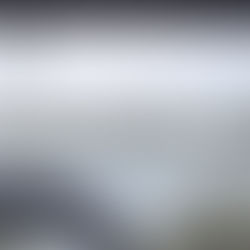Orasaigh - Apocalyptic Landscape
- Michael

- Jul 16, 2023
- 4 min read
In a first for these pages, a guest contributor. Rather than have me try and explain, I'll just hand over to Steve and include some photographs from the project...
How I came to write Orasaigh
I wrote my long poem Orasaigh (to be published as a collaboration with award-winning Uist-
based photographer Michael Faint, by Broken Sleep books, in August, 2024) in the summer of
2019. Earlier that year, in the last week of May, I had travelled to South Uist to holiday, as I
had at least once every year since 2008. Typically, I’d walk the hills, explore the heritage,
enjoy the culture, go birding and simply chill out. In 2019 I had another reason to travel to Uist: I needed some peace and quiet to begin my long-planned book of poems, The European Eel. My idea was to walk during the day and write in the evenings. However, whenever I sat
down to write, Orasaigh, the little tidal island that lies just off the Boisdale machair, kept
forcing itself into my consciousness.

When in Uist, I stay, whenever I can, in Roddy and Fiona Mac Innes’s Kelp Cottage in Boisdale. Orasaigh dominates the western horizon from the cottage—its humped twin summits loom over the machair immediately behind the cottage garden, no more than a quarter mile away. I’d spent a lot of time wandering around the little island and along the neighbouring beach and machair. Over the years I’d seen a range of phenomenal wildlife from it, including minke whales, common dolphins, Risso’s dolphins, harbour porpoises, grey seals, otters, white-tailed eagles, ravens, pomarine skuas, quail, glaucous gulls and great northern divers. I’d also spent several lazy summer afternoons just lounging on the grassy slope at the back of the island, gazing 4,000 miles across the ocean to Saglek Bay in Labrador, once falling asleep in the sun alongside my dogs, necessitating a waist-high wade to land as the tide came in behind us.
I’d also read up on the archaeology, prehistory and history of the area around the island—the
Neolithic settlements of An Doirlinn, Ceann a Ghàraidh, Kilpheder and Cladh Hallan, the maps of the early cartographers Pont, Blaeu and Bald, the abandoned machair settlement of old Boisdale, the closed burial ground, the Bonnie Prince, the post-1745 collapse of the Clan system, the Clearances, the Cathcart-Gordons, the Unionist suppression of the Gaelic language and culture and its late-twentieth century rebirth—in the context of the wider history of Uist, the Islands and Highlands, Scotland and the Imperial Union. With hindsight, I see that, over the years, the island had somehow become meaningful to me. It had entered my unconscious and evolved into a kind of lyrical symbol that was not only an anchor for my thoughts about and impressions of Uist, but a jumping off point for excursions into the wider world and explorations of my own preoccupations—social justice, ecology, questions of value, meaning and purpose. And Orasaigh’s demand was becoming urgent—whenever I settled down to write The European Eel, the island would muscle in and insist I write about it instead.

This is not typical for me. I am not usually the kind of poet who can visit a place to which he doesn’t really belong and respond immediately by writing a poem about it—I am not a tourist of my own experience, or a pillager of the experience of others. Virtually all my poetry in which landscape is important cuts trajectories into the South-West Yorkshire borderlands where I was born and bred, and where I still live. However, Orasaigh seemed determined—there it was, every time I opened the blinds, every time I took the recycling to the bin, every time I got into the car, every time I took out the dogs, every time a had a few beers outside before I was driven back in by the midgies, every time my head hit the pillow at night—yes, I even began to dream about the island, and some of those dreams are reflected in the poem. So, I made a deal with myself—and with Orasaigh. I’d give one evening of my week at Kelp Cottage to Orasaigh. I wouldn’t write a poem as such, but I’d brainstorm everything I knew, felt, had seen and thought about the island in a stream-of-consciousness frenzy of notetaking. I’d then put the notes to one side and review them when I got back home. If I still felt impelled to write about Orasaigh at that point, then I would—but only after I’d written the The European Eel, which I anticipated would take most of the rest of the year. I duly brainstormed, and by two a.m. had ten pages of notes about Orasaigh. The strategy seemed to work, because, for the rest of the holiday, Orasaigh seemed to back off, and I was able to settle down and begin writing The European Eel. However, when I got home, The European Eel was rudely elbowed aside once more. Orasaigh’s demand had overpowered my imagination and become irresistible. So, I gave in to the inevitable and wrote the poem. By September I had a first draft I was satisfied with—'the best thing I’ve ever written’ I told myself—and I was finally able to get cracking on my eel epic. The European Eel was finished by mid-2020 and published in July 2021. Orasaigh is taking longer to come to press, but more about that later.
































































Comments